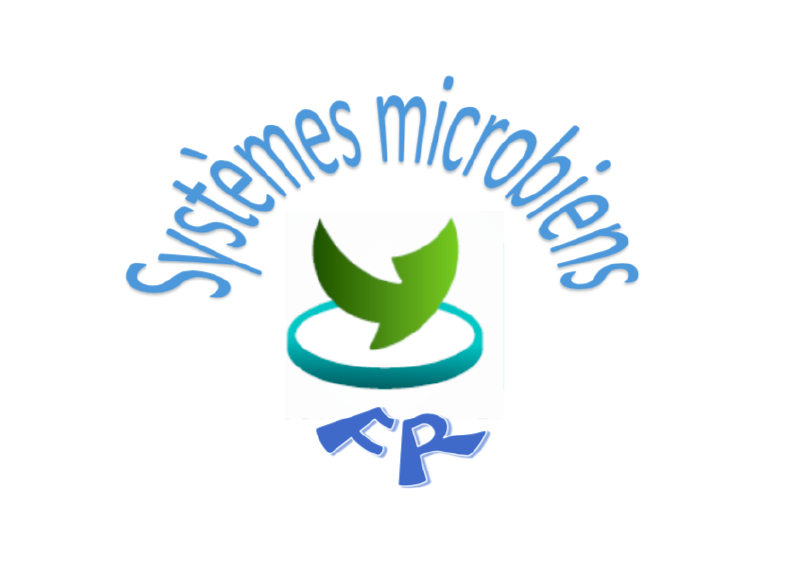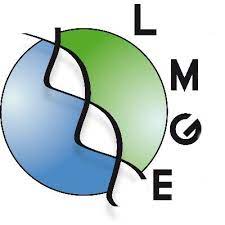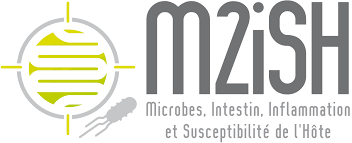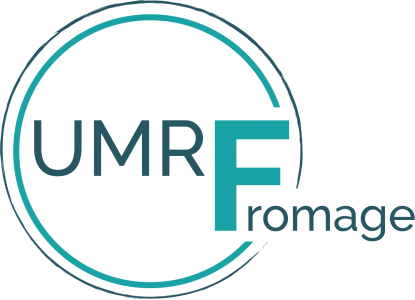CULTUROMIC
About us
It is a privileged partner in the realization of scientific projects related to microbiology.
Our services
The complementarity of these tools will make it possible to:
- Enumerate, characterize, isolate microorganisms from various ecosystems (aquatic, soil, atmosphere, plants, animals, humans, etc.).
- Cultivate microorganisms in planktonic, biofilm, anaerobic conditions.
- Directly quantify a genome element (DNA or RNA) in a biological or environmental sample.
- Study the interactions of microorganisms with eukaryotic cells.
Equipments
Anaerobic enclosure: Glove box (Jacomex)
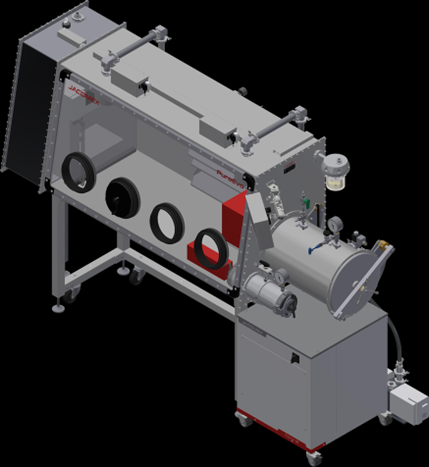
The anaerobic enclosure is equipped with 4 gloves (2 peoples), a thermostated incubator and a controlled anaerobic atmosphere (N2/CO2/H2 90/5/5). This equipment allows the preparation, culture and/or isolation of anaerobic microorganisms.
Sylvain DENIS (MEDiS) / Sylvie MIQUEL (LMGE) / Adeline SIVIGNON (M2iSH)
Transepithelial resistance measuring device

The CellZscope2 (nanoAnalytics) allows the study of the influence of substances, toxins, molecules or microorganisms on the permeability of the cell layer by impedance monitoring (TER + capacitance). This approach is real-time, direct (without marker), adaptable to different cellular models and requires little material (inserts of 6, 12 or 24 wells).
Adeline SIVIGNON (M2iSH) / Marjolaine DELABRE, Sylvie MIQUEL (LMGE)Automatic Seed Diluter (Easy spiral)
 The easySpiral Dilute® is designed to dilute a sample up to a dilution of 10-5, then automatically seed round Petri dishes of 90 or 150 mm in different modes (exponential, constant, circle, mass) to standardize seeding and facilitate bacterial colony counting. It allows a seeding of several dilutions per box and therefore a significant saving of consumables.
The easySpiral Dilute® is designed to dilute a sample up to a dilution of 10-5, then automatically seed round Petri dishes of 90 or 150 mm in different modes (exponential, constant, circle, mass) to standardize seeding and facilitate bacterial colony counting. It allows a seeding of several dilutions per box and therefore a significant saving of consumables.Caroline CHEVARIN (M2iSH), Michaël RODRIGUES (M2iSH), Nicolas CHARBONNEL (LMGE)
Automatic colony counter (Scan 4000)
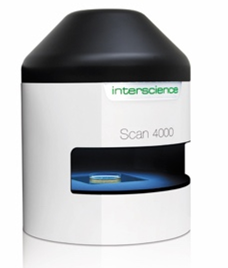
This automatic counter allows the counting of bacterial colonies on round Petri dishes 55, 90, 100, 150 mm and square boxes 120 mm with manual or automatic seeding thanks to the easySpiral Dilute®. It can count colonies on chromogenic agars, filtration membranes and read susceptibility tests.
Automated liquid handler and colony picker (Fluent control T480 TECAN)

This automate has 1 arm with 8 independent channels allowing volume pipetting from 1 to 1000 μL and 1 displacement arm for SBS microplates and 90 mm Petri dishes. Its use allows the distribution of liquids, dilutions serial in microplates etc ... Pickolo is a colony picker coupled to Tecan liquid handlers, it allows colony picking from a 90 mm round Petri dish and seeded in a 96-well microplate. Colony selection can be done by size, colour and shape or fluorescent (GFP). Its use requires the creation and validation of the computer script corresponding to the desired applications. The consumables used must be standardized and of the same reference.
Frédéric FAURE (M2iSH), Laurent NAKUSI (LMGE)Microfluidic device (BioFlux 200, Fluxion) coupled to an observation system (Axio-Observer 7, Zeiss)
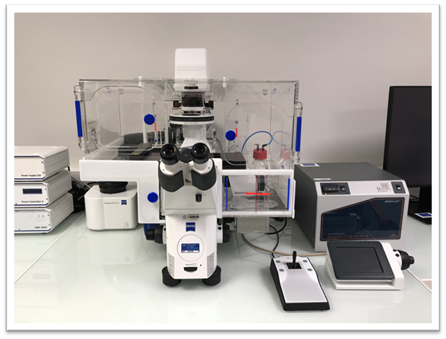 The BioFlux® system allows cell-based tests to be performed under physiological flow conditions. Through the use of microplates with an integrated microfluidic component, a variable and controlled flow (0.1-200 dyne/cm2) is obtained in the microplate channel. This system allows the study of the formation of biofilm, adherent cells under a flow. An inverted epifluorescence microscope (thermostated chamber, CO2 controller, Apotome, motorized stage,...) allows automated imaging for the analysis of living cells under shear flow.
The BioFlux® system allows cell-based tests to be performed under physiological flow conditions. Through the use of microplates with an integrated microfluidic component, a variable and controlled flow (0.1-200 dyne/cm2) is obtained in the microplate channel. This system allows the study of the formation of biofilm, adherent cells under a flow. An inverted epifluorescence microscope (thermostated chamber, CO2 controller, Apotome, motorized stage,...) allows automated imaging for the analysis of living cells under shear flow.Damien BALESTRINO (LMGE)
Multiplate reader (Spark Cyto 400, Tecan)
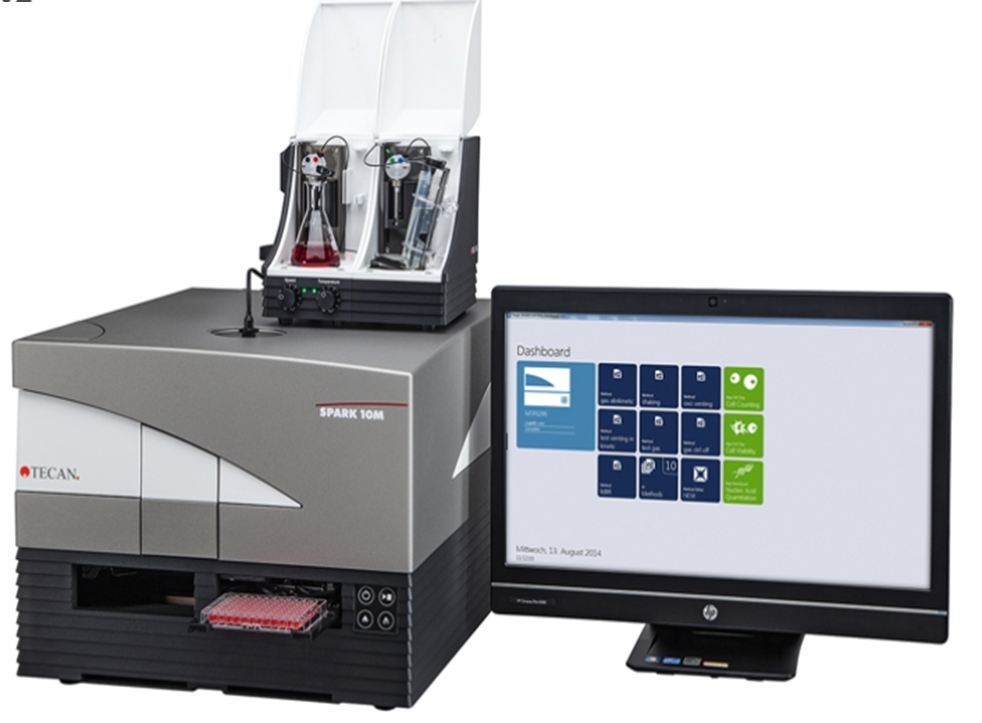 Spark Cyto is a multi-mode plate reader with fluorescence imaging and cytometry capabilities, unlocking new possibilities for your cell-based research. By combining live cell imaging with industry-leading detection technologies, you now have the ability to unite qualitative and quantitative information into unique multi-parameter data sets. There are three reading modes: Absorbance: monochromator, UV/Visible from 200 nm to 1000 nm, end point or kinetic, Fluorescence: Double monochromator, Excitation 230-900 nm, Emission 280-900nm, reading from above and/or below, TR time-resolved fluorescent, Luminescence: 38 filters, luminescence scans from 390 nm to 660 nm, multiplex measurements. Spark Cyto includes three magnification levels (x2, x4, x10) combined with four channels for fluorescence and bright field imaging, enabling high quality cell analysis for a wide variety of applications.
Spark Cyto is a multi-mode plate reader with fluorescence imaging and cytometry capabilities, unlocking new possibilities for your cell-based research. By combining live cell imaging with industry-leading detection technologies, you now have the ability to unite qualitative and quantitative information into unique multi-parameter data sets. There are three reading modes: Absorbance: monochromator, UV/Visible from 200 nm to 1000 nm, end point or kinetic, Fluorescence: Double monochromator, Excitation 230-900 nm, Emission 280-900nm, reading from above and/or below, TR time-resolved fluorescent, Luminescence: 38 filters, luminescence scans from 390 nm to 660 nm, multiplex measurements. Spark Cyto includes three magnification levels (x2, x4, x10) combined with four channels for fluorescence and bright field imaging, enabling high quality cell analysis for a wide variety of applications.Caroline CHEVARIN (M2iSH), Damien BALESTRINO (LMGE)
Droplet Digital (dPCR) (Biorad)
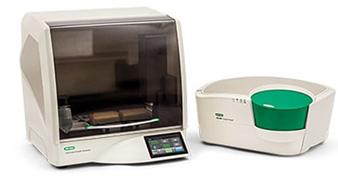 Based on water-emulsion droplet technology, Droplet Digital PCR fractionates a DNA sample in 20,000 droplets. PCR amplification of the template subsequently occurs in each individual droplet, and counting the positive droplets gives precise, absolute target quantification. It is highly effective for resolving low abundance targets, such as allelic or structural variants but also for genotyping, absolute quantification, and copy number variation. Quantifying the sample target does not require a calibration curve.
Based on water-emulsion droplet technology, Droplet Digital PCR fractionates a DNA sample in 20,000 droplets. PCR amplification of the template subsequently occurs in each individual droplet, and counting the positive droplets gives precise, absolute target quantification. It is highly effective for resolving low abundance targets, such as allelic or structural variants but also for genotyping, absolute quantification, and copy number variation. Quantifying the sample target does not require a calibration curve.Damien BALESTRINO, Jérôme LESOBRE (LMGE), Pierre SAUVANET (M2iSH)
MALDI-TOF MS : MALDI Biotyper® sirius (Bruker)
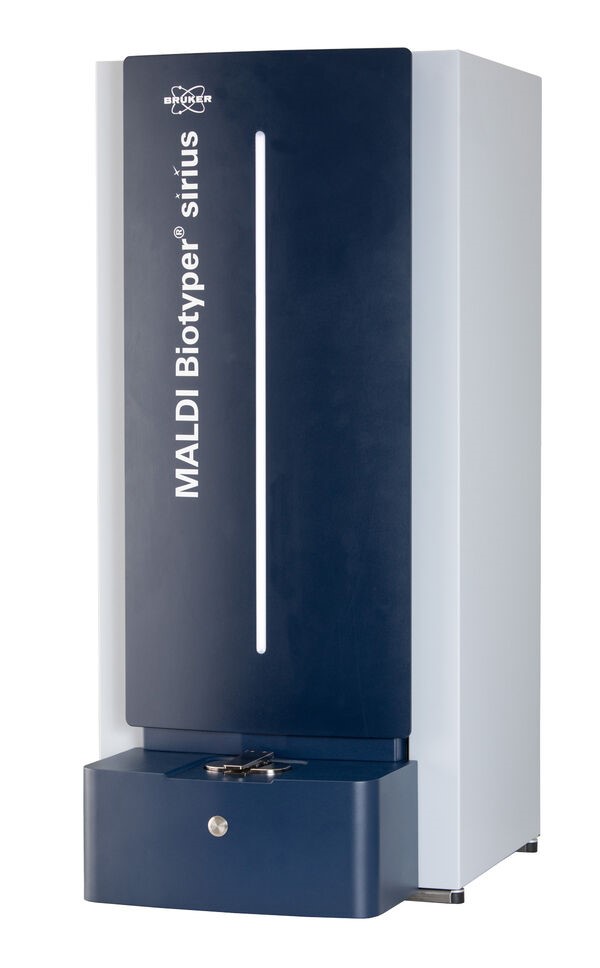 The MALDI Biotyper® sirius is a MALDI-TOF MS - for matrix-assisted laser desorption-ionization coupled to a time-of-flight mass spectrometer - designed for the identification of microorganisms. This technology produces mass spectra directly from colonies. The profiles obtained are compared with a database to identify the strains tested.
The MALDI Biotyper® sirius is a MALDI-TOF MS - for matrix-assisted laser desorption-ionization coupled to a time-of-flight mass spectrometer - designed for the identification of microorganisms. This technology produces mass spectra directly from colonies. The profiles obtained are compared with a database to identify the strains tested.Two sample ionization modes are available:
- Positive ionization: For proteomic analysis of samples, enabling identification down to the species or group of species.
- Negative ionization: For lipidomic analysis of samples, enabling for example the detection of antimicrobial resistances such as colistin, associated with a modification of lipid A.
It is also equipped with two modules:
- The MBT HT Subtyping module, for automatic detection of strain-specific markers to facilitate differentiation or detection of resistance markers.
- The Explorer module, enabling users to create their own database and share spectra with other equipped laboratories.
Mini bioreactors:DASbox® (Eppendorf)
The DASbox® system is a fully motorized and independent 4-fold mini bioreactor. It is designed for microbial fermentation or cellular culture.
Each unit has a working volume comprised between 60 and 250 mL and permits to precisely control a panel of critical parameters such as pH, redox potential, temperature, injected gas mix composition (air, N2, O2 and CO2), etc.
Each unit is equipped with pH, redox and temperature probes, two peristaltic pumps, an agitation system, a Peltier condenser, a water-free thermic regulator and a gas mix module.
This flexibility and small volumes make it an ideal solution for process development, screening or culture optimization.


